By closely analysing your competitor’s performance and strategy, you can identify gaps in your own website’s content, identify new strategic approaches, set realistic goals and targets, and much more.
A good place to start is by understanding exactly where your competitors’ traffic is coming from. Luckily, there are a few great tools out there for this purpose.
Content analysis tools
While there are a host of tools to analyze search traffic and keywords, three of the best are SimilarWeb, SemRush, and Ahrefs.
SimilarWeb
SimilarWeb collects data on your competitors and industry from hundreds of sources, analyzes and compiles it, and presents it in easy to understand visualizations. Their simple browser extension also lets you instantly analyze any website’s statistics as you’re browsing.
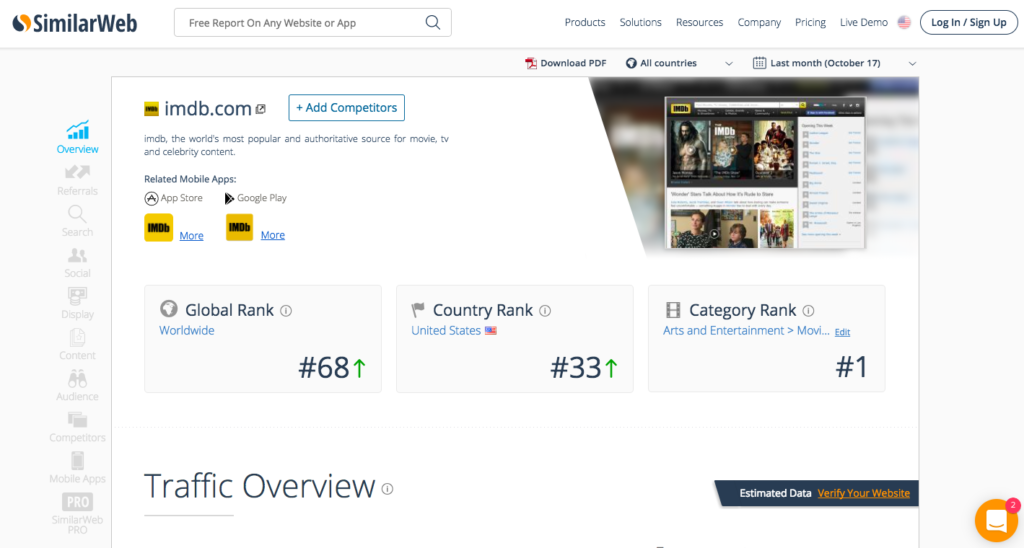
They offer a few different tiers and products for different types of teams. On the free tier, you gain access to 5 results per metric, 1 month of mobile app data, and 3 months of web traffic data. Paid tiers offer more extensive analysis and metrics.
SemRush
SemRush offers a host of tools to help marketers analyze competitors and discover new ones, identify keywords, analyze competitors’ advertising efforts, and more. You can try out their features for free (analyzing up to 10 domains) with a quick signup.
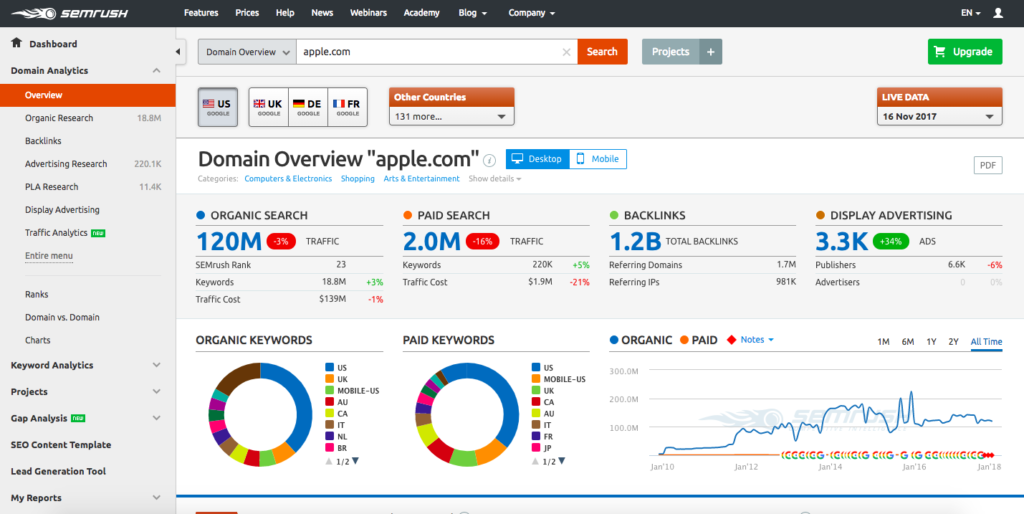
Their basic plan starts at $99USD/month and gives you access to 25 tools for analyzing your search traffic, social media, paid advertising, content, and other projects.
Ahrefs
Ahrefs has a range of tools to analyze competitors, research keywords and backlinks, track your rank, and monitor the web for opportunities. They also offer a unique “Content Gap” tool specifically built to help you uncover the keywords your competitors rank for but you don’t.
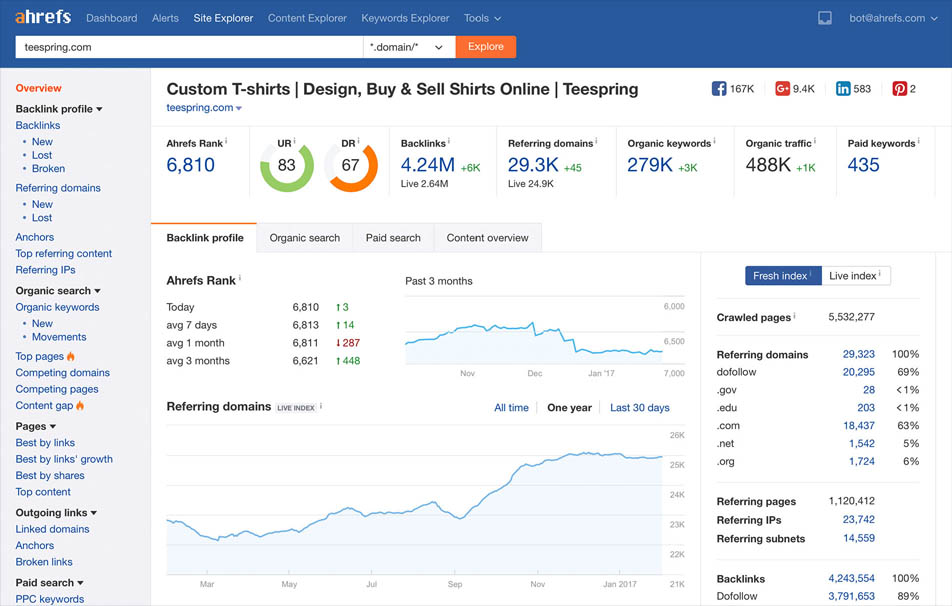
Prices for Ahrefs start at $99USD/month for the Lite plan, which gets you access to most of their tools, including the Site Explorer, Rank Tracker, Content and Keyword Explorers, and more.
While they offer different features, pricing, dashboards, and usability, all of these tools work in a similar way. Whichever you choose, you’ll be able to view estimates based on data from a variety of sources as to what percentage of your competitors’ traffic is direct, organic search/SEO, paid, or social. Here’s what that means:
- Direct: People typing the URL in the address bar
- Organic search/SEO: Coming from clicking search results on Google or other search engines
- Paid: Coming from paid ‘Pay-Per-Click’ ads on Google
- Social: Coming from Facebook, Twitter, and other social media networks
SimilarWeb offers a smaller dataset than the other two, but does also estimate referral traffic from other sites.
In most circumstances, you’ll find your competitors get most of their traffic from organic search. The next step is to find exactly what keywords are driving most of that traffic.
SEO competitor keyword analysis
With any of the previously mentioned tools, it’s easy to find exactly which keywords your competitors are ranking for.
Just plug in the domain name and you’ll see a list of keywords, along with stats like the position they’re ranking in, volume of search traffic, number of search results, and more.
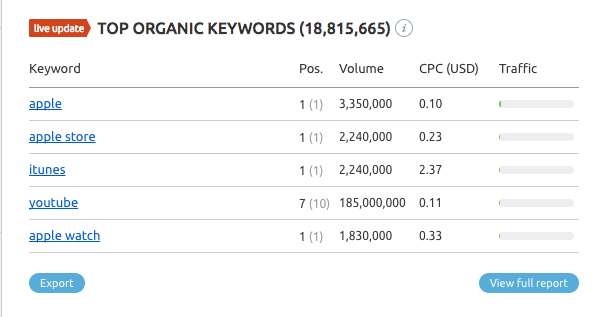
You’ll get a lot of data, but it’s worth going through all of it manually to identify the keywords, and more importantly, the topics they rank for that you don’t.
You may find that some keywords your competitors rank for will suggest an entirely new content section for your website (e.g. ‘video marketing blog’). Others will hint at specific topics to cover within those sections (e.g. ‘video marketing tips’).
As you go through, make notes on what content you could create for your own site to better serve those search queries. Ahrefs even tells you exactly what URL your competitor is ranking with, so you can easily take a look and get an idea of what your own content will be competing against.
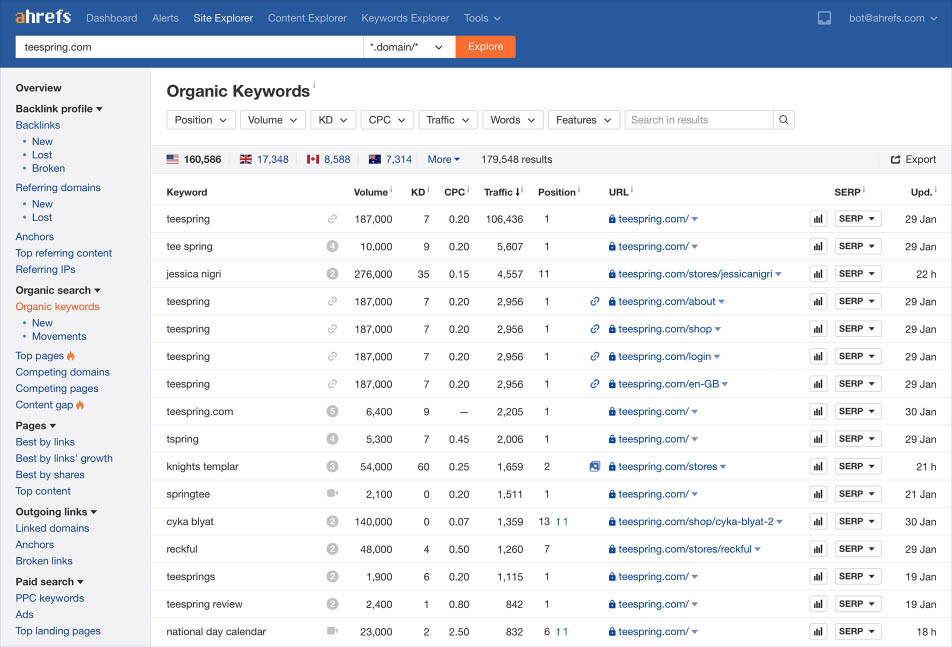
Once you’ve exhausted this process with your direct competitors, it’s worth repeating the process with indirect competitors who are creating content in the same space.
SemRush and Ahrefs both also offer keyword research tools that help you discover similar terms and determine who’s ranking for them now.
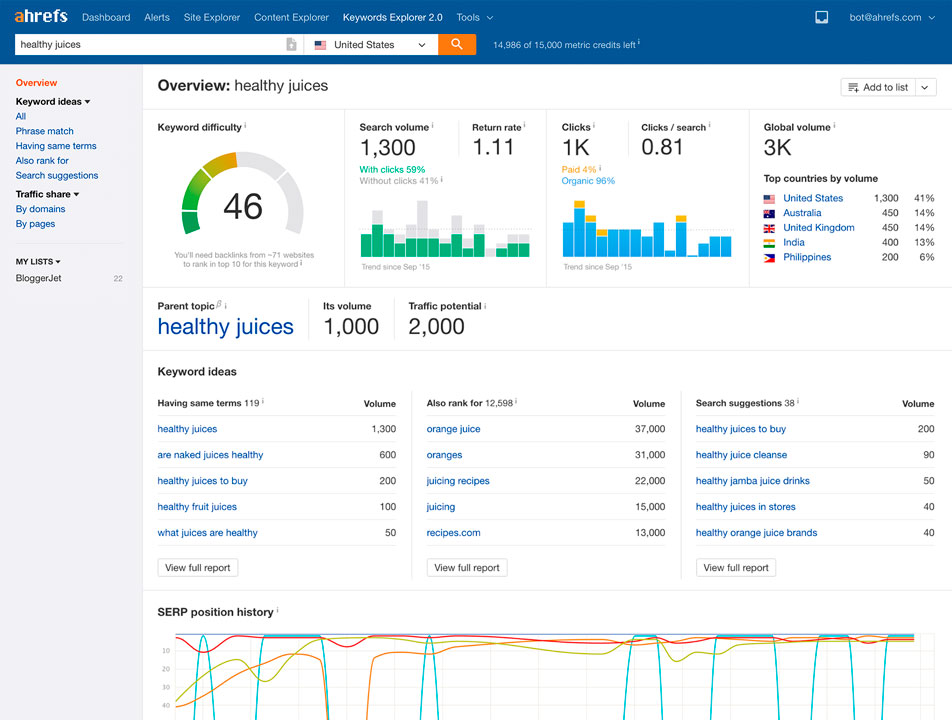
If you have one keyword in mind, you can enter it into this tool to pull up a list of related terms you could target. This could help you find new opportunities, as well as who’s currently ranking for them.
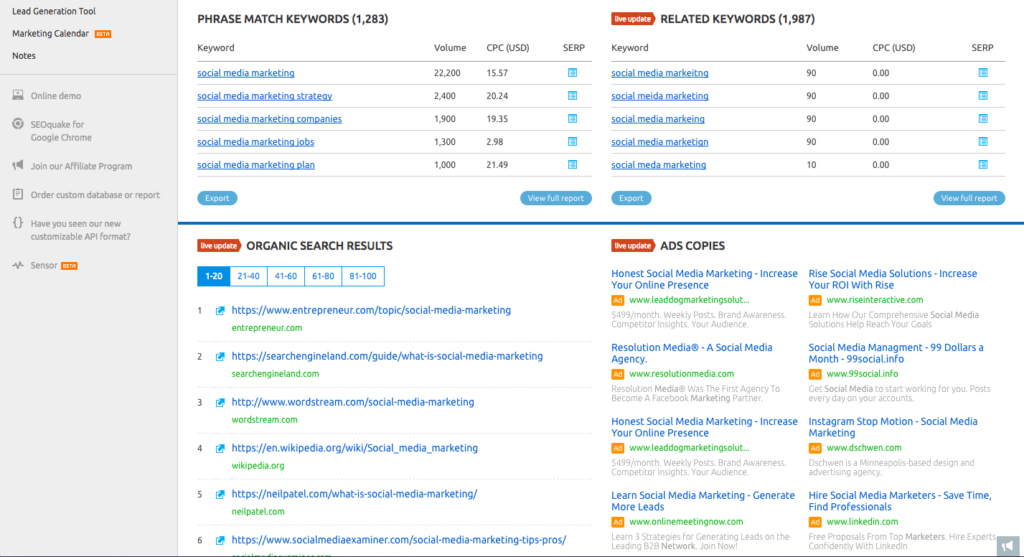
Ahrefs even estimates how difficult it will be to rank for a given keyword, based on the number of backlinks that the top-ranking pages have. This tool can help you discover the “low-hanging fruit” — keywords that might be easier to rank for.
Finding competitor links
Another very important aspect of content gap analysis is knowing where and how your competitor’s content is linked from other sites. These are called backlinks, and they’re a critical factor in SEO success, so it’s good to know how your competitors are obtaining these.
Again, Ahrefs is a great tool for this. In the left hand sidebar menu under Pages, click on ‘Best by links’. This will give you a nice report showing which pages your competitor has the most/highest quality backlinks.
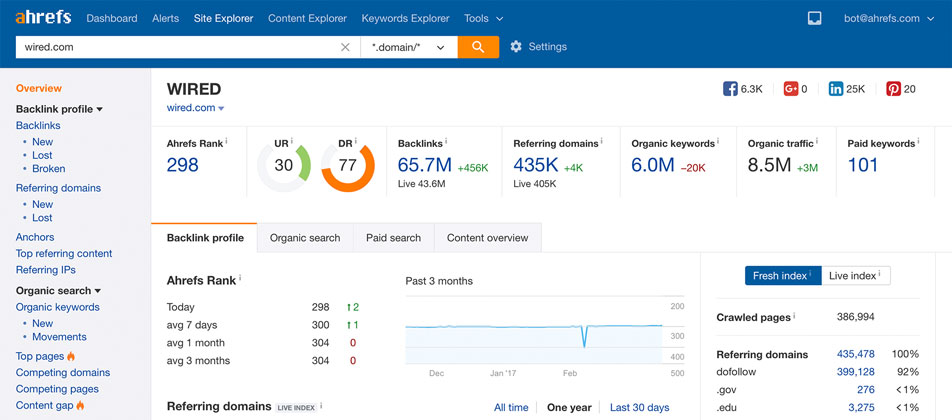
Naturally this will most often be the homepage, but you will likely also discover which of your competitor’s content is performing best. Knowing this information is the first step to understanding your competitor’s strategy and creating your own link-building campaign.
SemRush has a similar tool that breaks down the top backlinks, referring pages and domains, and even a tool to explore your competitor’s competitors.
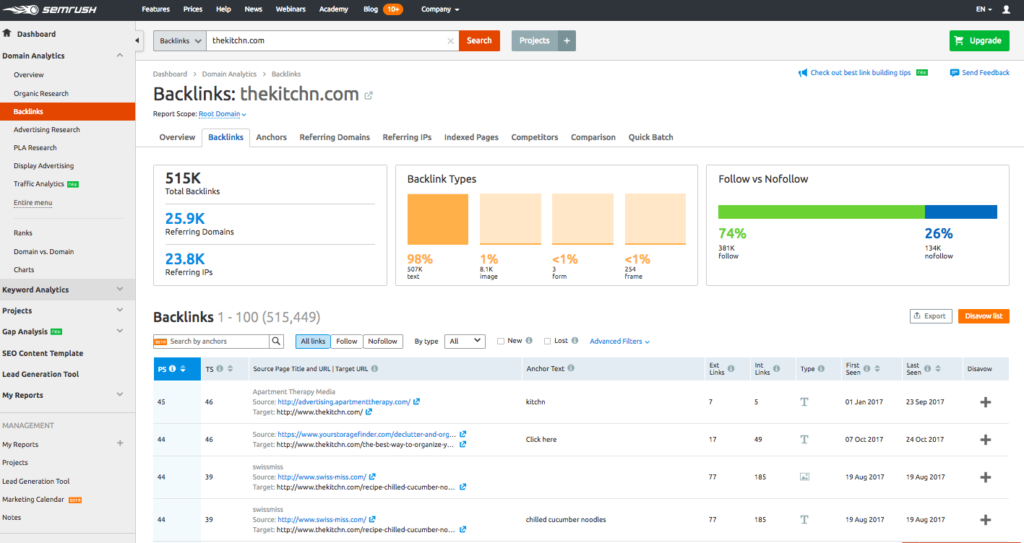
Identifying your content gap
Once you’ve completed your research, the next step is to analyze your results and determine exactly where your content gap is.
You could do this manually using a tool like Excel, by compiling all the keywords your competitor ranks for and subtracting all the keywords your website is already ranking for. The keywords that are left are where your content gap lies.
Of course, if you have a lot of competitors and keywords, this process can take a long time. Ahrefs and SemRush both offer gap analysis tools that enable you to analyze many competitors all at once, alongside your own domain, revealing a huge list of the keywords you should focus on.
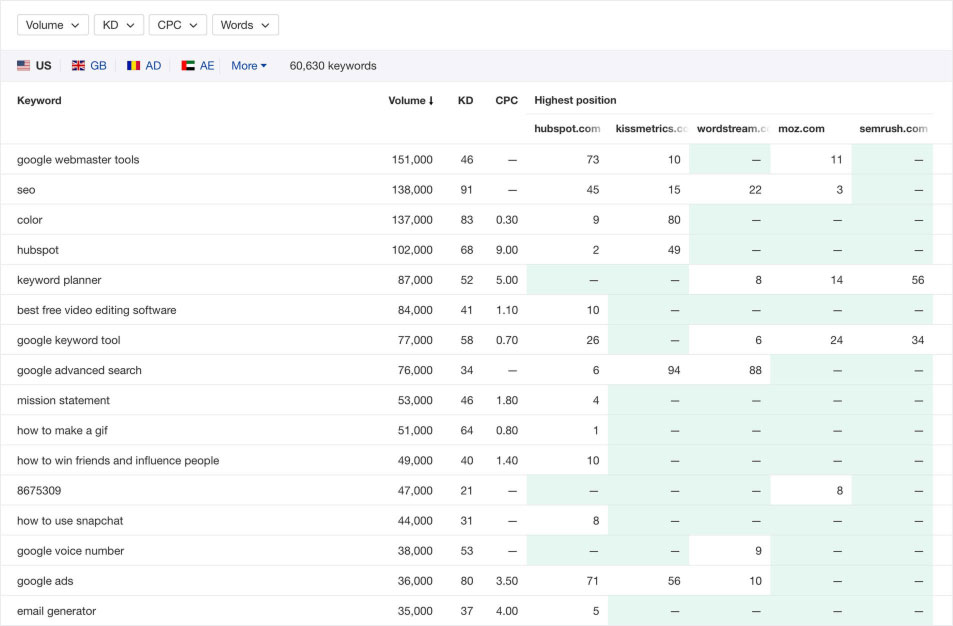
SemRush also offers Keyword Gap and Backlink Gap tools that work in a similar way, allowing you to compare your domain against multiple competitors and discover the keyword intersections, plus any areas where you’re falling short.
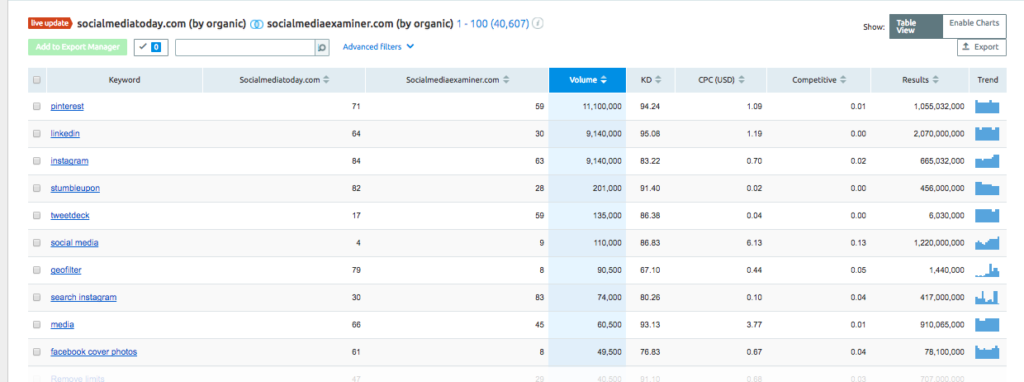
Final thoughts
Once you’ve discovered your content gap, you can begin brainstorming topics and publishing content that will help to fill it. You can do this through blog content and by taking a look at the existing pages on your website to see if there are areas you can improve. Strategies like asking for or trading backlinks with other content producers can work, as long as it’s relevant (like being included in a list post.)
As you’re creating content, don’t be afraid to think outside the written word. Pages with video content in particular tends to rank well in Google search results, which could be another opportunity to differentiate yourself and outpace your competitors, especially if they mainly focus on written content. Biteable could be a particularly useful tool here.
By using the latest tools and getting strategic about the content you create, you can discover — and start to narrow — the content gap between you and your top competitors.

